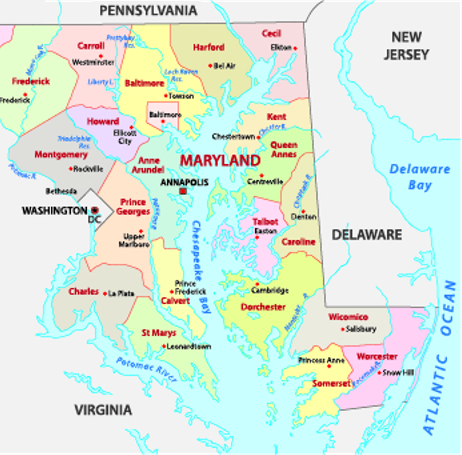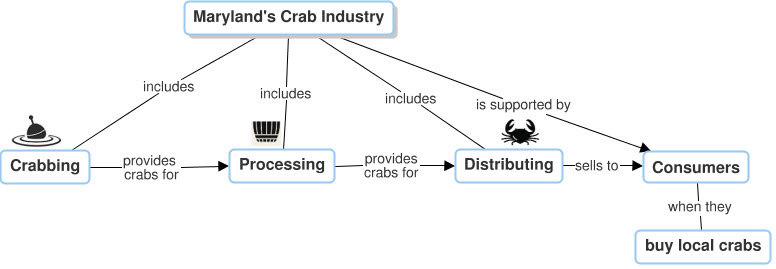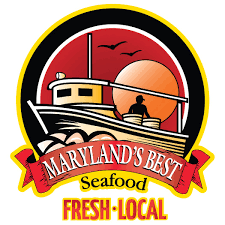This module is for

Male blue crabs are often found in the upper parts of the Chesapeake Bay including areas north of Annapolis and Baltimore where the water is less salty. Female blue crabs enjoy saltier waters of the middle and lower bay, including areas off the shores of Dorchester and Somerset counties.
Crabbing
The Chesapeake Bay watershed is a vibrant estuary made up of water from the Atlantic Ocean and the watershed of six states—Delaware, Maryland, New York, Pennsylvania, Virginia, West Virginia, and the entire District of Columbia—with 50 major rivers and streams.
The Maryland crab industry depends on the crabs that come from the Chesapeake Bay and in order to experience the taste of these amazing creatures, we depend on the men and women who do the hard work of catching them.
Maryland watermen and waterwomen work on the waters of the Chesapeake Bay during the crabbing season which typically begins in April and ends in October. They are responsible for harvesting the crabs that are delivered to picking houses who process crab meat, and distributors like local restaurants and markets that sell crabs to consumers.
Consumers play a vital role in keeping Maryland’s crab industry alive. What might happen if consumers, restaurant owners, and markets stopped purchasing Maryland crabs?
As you watch the following video, think about the benefits of buying local crabs and the legacy that inspires the watermen who are dedicated to this work.
Concept Map
Buying local crabs supports Maryland’s crabbing, processing, and distributing businesses. You’ll learn more about how these businesses work together to keep the crab industry going, but first let’s take a moment to set up our concept map so that you are ready to record what you learn.
You may use a blank sheet of paper or download the concept map starter template below. Add additional nodes to the template to complete your concept map. Legal size paper (8.5 X 14) or larger is recommended to give you plenty of room for your concept map.
Chesapeake Bay Blue Crab Concept Map Starter Template
Start with the main topic or concept.

You’ve been introduced to three businesses that play important roles in the crab industry. Let’s add these businesses to our concept map by answering this question:
What types of businesses make up Maryland’s crab industry?
Then think of words or phrases that describe the relationship between these businesses and the main topic. It may help to think of a statement to express this relationship. For example, “Maryland’s Crab Industry includes crabbing.”
Remember, you can also include images or symbols to represent a concept or idea. Try adding a simple drawing, illustration or photograph to represent each type of business: Crabbing, Processing, and Distributing. Visual cues can help you quickly identify a section of your map.
Now consider how each of these businesses might be related. Does one depend on the other? What role does each business play in relation to others? Think of a statement that describes the relationship between these businesses and add horizontal lines to connect them.
You also learned about consumers.
How do consumers support Maryland’s crab industry?
Add a box for consumers and connect it to the main topic or another concept. Remember, there are many ways to express what you learn and the relationships between topics and ideas on a concept map. Use your best judgment for now. You can always revisit topics later as you learn more.













